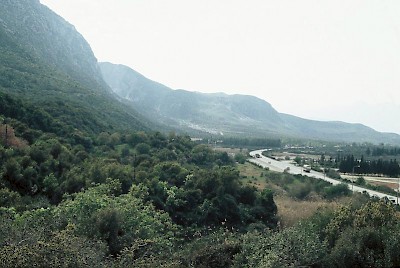Thermopylae (447 CE)
Q194450Thermopylae (Greek: Θερμοπύλαι; "Hot Gates"): small pass in Greece, site of several battles.

In Late Antiquity, the Roman Empire was often under attack from foreign tribes, usually referred to as “barbarians”. Even when the names are more precise, like “Goths” or “Huns”, the invaders were a mix of all kinds of people. In the year 447 CE, king Attila led an army of Huns to the Balkan peninsula. Having crossed the Danube near Viminacium, his cavalry proceeded along the river tot he east, followed the shores of the Black Sea to the south, defeated the Byzantine army at Marcianopolis, and refrained from an attack on Constantinople. The emperor Theodosius II remained inactive.
Attila’s army turned west, passed through Thrace, went along Thessaloniki, and swept through Thessaly. A Byzantine chronicler named Marcellinus Comes refers to this invasion and says that Attila reached the Thermopylae, where he found his advance blocked by unidentified defenders.note In the end, a treaty was concluded, in which the Byzantines agreed to an increase of the annual payments from 700 to 2100 pounds of gold.
Attila now decided to move tot he western provinces of the Roman Empire.